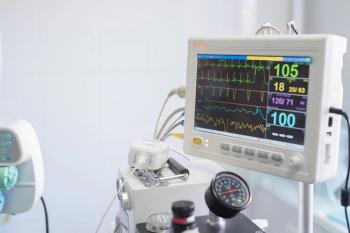
Clinician to Clinician: When pancreatitis strikes postpartum
Detecting acute postpartum pancreatitis requires acute diagnostic skills. Three experts explain the best approach.
When acute pancreatitis occurs in the postpartum period, clinicians consider many causes, the most common being gallstones and alcohol abuse.1,2 Gallstone disease affects women three times more often than men3 and is the most frequently reported cause of acute pancreatitis in women, with the age of peak incidence between 50 and 60 years.2 Men, on the other hand, are thought to have their first episode of gallstone pancreatitis at an earlier stage and at a younger age than women (mean age of 51 years for men and 55 years for women), with the attacks being associated with the gallbladder containing a smaller number of stones than in women. Postpartum pancreatitis usually occurs at the average age of 28 years.4
Estrogen plays an important role in lipid metabolism and can worsen a pre-existing hypertriglyceridemia by reducing triglycerides clearance and increasing their endogenous production.5 But the hormone can cause pancreatitis in the setting of normal plasma lipids.6 Recent reports point out that estrogen can induce cholesterol gallstones through its effects on hepatic estrogen alpha receptors.7 Progesterone has also been implicated by increasing lipase and trypsin production, relaxing the common bile duct, and by increasing the tone in the sphincter of Oddi.8 No doubt this research explains why some experts have suggested avoiding hormonal contraception in patients with a history of acute pancreatitis during pregnancy to prevent recurrence,9 and probably this can be expanded to include patients with postpartum pancreatitis as well.
What are the best diagnostic tools?
Calculi in the common bile duct is the most commonly reported cause of postpartum pancreatitis,4,11 but a higher body mass index stands out as an important risk factor for hospitalization in the postpartum period secondary to gallstone-related symptomatology, which includes biliary pancreatitis.12
To differentiate biliary pancreatitis from other causes, look for amylase levels above 1,000 IU/L and elevated ALT levels that are more than threefold greater than normal; both findings are suggestive, not definitive, however,13 and mandate appropriate imaging evidence. Transabdominal ultrasound is often used for diagnosing gallstones, but its sensitivity decreases from 95% to 60% to 80% during acute pancreatitis.13 The sensitivity of transabdominal U/S is even lower (20%) when trying to detect common bile duct stones during the attack of acute pancreatitis.14
Endoscopic ultrasound, if available, is superior in detecting choledocholithiasis in patients with biliary pancreatitis. It is more sensitive in detecting small gallbladder stones that are 1 to 9 mm; that can be useful in patients with idiopathic pancreatitis, as well, because it detects stones hiding in the gallbladder's infundibulum.15 It has a sensitivity of 91% to 100% and a specificity of 84% to 100%.16,17
Computed tomography may help diagnose the complications of pancreatitis as well. Dynamic CT pancreatography has been reported to pick up areas of necrosis in the pancreas with a positive predictive value of 92%, but relating the results to the clinical severity of the condition can be difficult since areas of necrosis have been detected even in mild panceatitis.2
Magnetic resonance cholangiopancreatography (MRCP) is another useful tool. It's noninvasive and considered superior to transabdominal U/S in detecting choledocholithiasis, but its sensitivity is somewhat limited and lags behind endoscopic U/S in detecting smaller-sized stones ranging between 3 and 5 mm.18 When MRCP was compared to endoscopic retrograde cholangiopancreatography (ERCP) in patients with acute and chronic pancreatitis, researchers found that the sensitivity for detecting the biliary tree segments using MRCP to be 94% and for detecting the different parts of the pancreatic duct ranging between 76% to 90%. There were no sensitivity readings for ERCP in this study, whereas other researchers reported a sensitivity for MRCP in detecting bile duct stones to be 80%, compared to ERCP's sensitivity of 90%. That led to the conclusion that in the setting of pancreatitis, MRCP can give diagnostic information comparable to those of ERCP.14,19
Axial images can be useful in detecting large impacted stones in the bile duct, which are otherwise difficult to see in the absence of a high-intensity bile signal around low-intensity stones. These views, as well as T2-weighted images, also help to differentiate between bile duct stones and pneumobilia (air in the bile duct).20
Newsletter
Get the latest clinical updates, case studies, and expert commentary in obstetric and gynecologic care. Sign up now to stay informed.
















